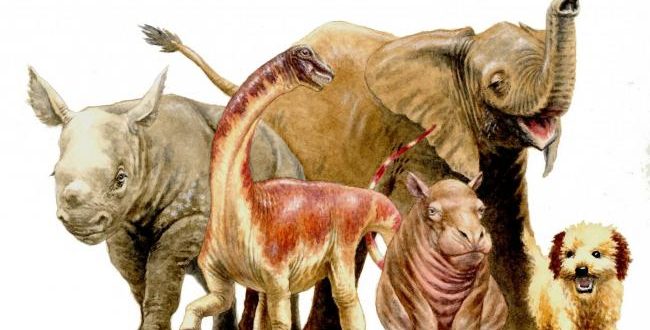Scientists have found that Rapetosaurus – one of the species of plant-eating titanosaurs – were born with adult like proportions and were more independent than other species of dinosaurs.
Kristina Curry Rogers, a paleontologist at Macalester College in Minnesota, and her colleagues found fossils from a baby Rapetosaurus in an ancient 70- to 66-million-year-old rock formation in Madagascar. The specimen, which died (probably of starvation) 39 to 77 days after birth, was found to already have adult-sized proportions and was 14 inches (35 cm) tall at the hip.
They found it would have weighed about 3.4kg after hatching. When it died, it had grown to weight about 40kg. What’s more, the team showed the proportions of its bones were very similar to those seen in adults. This suggests that when the baby R. krausei left the egg it was able to walk and feed itself.
The young of other dinosaur groups, including theropods, had limb proportions different to those of adults, indicating they relied on their parents for food and care (similar to most birds today). By having adult-like limbs, R. krausei would not have needed its parent to support and care for it in the same way. R. krausei’s self sufficiency is further backed-up by evidence, such as stress on the bones, to show young dinosaur had lived an active life.
The infant appears to have died from starvation as a result of a “drought-stressed ecosystem”, the study authors said. When animals starve, the cartilage at the ends of their bones stop growing. In the R. krausei fossil, the cartilage regions were found to be very thin.
While this infant appears to have died from starvation, the researchers say their findings do not necessarily mean all titanosaurs left their young to fend for themselves. In an interview with Science magazine, Hotz said: “To most people, all sauropods look alike: tiny at one end, tiny at the other, big in the middle. But that doesn’t mean there wasn’t a lot of variation within them.”
Agencies/Canadajournal

 Canada Journal – News of the World Articles and videos to bring you the biggest Canadian news stories from across the country every day
Canada Journal – News of the World Articles and videos to bring you the biggest Canadian news stories from across the country every day

